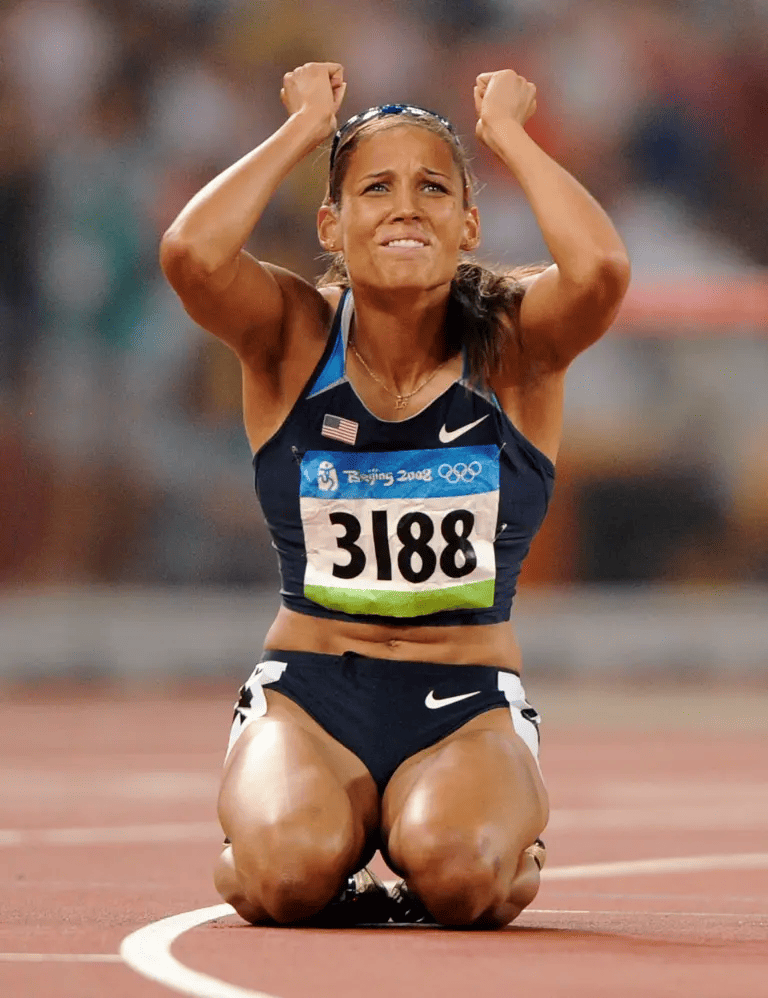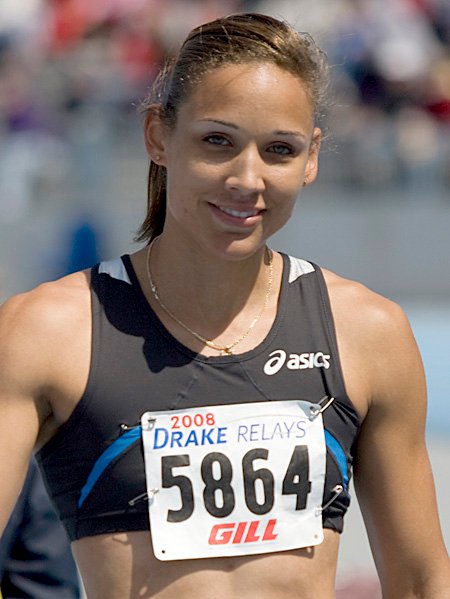Olympic track and field trials results: Lolo Jones, 41, is back in the 100 hurdles
Hours earlier, she didn’t know if her torn hamstring would allow her to make it to the blocks. Now she wasn’t sure if she would make it to the finish line.
So later, after she had finished the race, she was asked how she managed to overcome the ten obstacles on Friday? Was it sheer will? Adrenaline?
“Toradol,” Jones said. “The official sponsor of 41-year-olds.”
A familiar and surprising competitor showed up at the U.S. trials on Friday. Jones made her trials debut 20 years ago in Sacramento, where she competed with Gail Devers, who made her first Olympic appearance in 1988. “That’s how old I am,” Jones said. She competed in two Summer Olympics and one Winter Olympics, and nearly won gold in the 100-meter hurdles at the 2008 Olympics before hitting a hurdle while leading near the end of the race.
Despite never winning an Olympic medal, Jones has made herself one of the most notable Olympians of the past two decades. She used her talent, looks, an early knowledge of social media and the impressive novelty of organizing winter and summer games to achieve fame.
And Jones is still there. During the last Olympic cycle, Jones said she felt “pushed out” by U.S. bobsled officials because of her age. She wanted to keep competing, so Jones returned to the hurdles. At a track meet in Gainesville, Florida, in April, Jones ran the 100 hurdles in 13.11, comfortably under the trials qualifying standard of 13.25 seconds.
Jones’ time suggested the trials would be an exhibition and little more. But she wanted to come anyway, to offer hope to younger athletes who might feel crushed if they don’t make it to the Olympics.
“I hope to show them that you can still be in your 40s and be good enough to qualify for the Olympic trials,” Jones said. “And I hope that someone after me is good enough to perform in their 40s. Sports science is getting better and better. Tom Brady didn’t retire until he was 45. I hope these kids see me and say, ‘You know what? My The world won’t end if I don’t make this Olympic team.’ There is longevity.”
On the way to the trials, however, Jones suffered a setback. She suffered a grade 2 hamstring tear six weeks ago. “I just got hurt,” Jones said. “And it’s an injury that isn’t due to age. It’s an injury that I get all the time as a hurdler.”
Jones couldn’t train on a track. The first time she tried to hurdle after her injury was last Saturday, when she jumped six hurdles and cramped her hamstring, another setback. She waited until Thursday to try again. She cleared one hurdle and cried in pain.
When she woke up Friday, she wasn’t sure if she could compete. She called a few old bobsled teammates. “I thought, ‘If you gave me the option to crash on the scariest bobsled track right now or do the Olympic trials race, I would choose to crash in the bobsled at 90 miles per hour,’” Jones said. “That’s how scared I was to stand on the starting line. I had no idea if I was going to pull my hamstring.”
Jones still wanted to run. She wanted to prove she could do it, and she had the modern medicine: a painkilling injection. When Jones’ name was announced as she settled into her pads, Hayward Field roared.
“I’m so thankful for everyone who cheered for me,” Jones said. “It’s been so long that I thought people had forgotten. It means the world to me that people remember my name or shout it out. Because I was terrified on that starting line. I was crying this morning because I thought I was going to have to pull out of the race. For me, it was a huge victory to be on that starting line and get through all 10 obstacles.”
Jones finished in 14.86 seconds, a gap between her and the second-to-last in her heat. “I don’t want people to think this is what a 40-year-old can do,” Jones said. “I was on track to run 12 seconds” before the injury.
Jones could still race, if her hamstring allows it. Thanks to several scratches and an extensive qualifying system for the opening round, all 27 participating hurdlers advanced. Nia Ali, the Tokyo Olympic silver medalist, decided on an energy-saving strategy with a bizarre aesthetic: She trotted out of the blocks and walked softly over obstacles to finish in 20.38 seconds.

Jones sees her career as a series of setbacks she has had to overcome. Missing the Olympic team in 2004 helped her make it in 2008; tripping over a hurdle in 2008 inspired her to finish fourth due to injury in 2012; failing to win medals convinced her to try bobsledding and become a unique double Olympian.
“If you have a setback, if you have a loss, if there’s something that’s trying to break you, use that as motivation,” Jones said. “That’s why I’m a hurdler — I like to overcome things.
“I’m still in this fight. You guys act like I don’t have a semi-final. But I do have a semi-final. I know 14 seconds wasn’t that great, but we’re in it. When I wake up, when I don’t need my stick, we’re going.”


